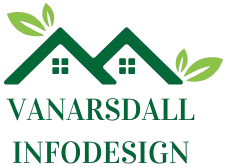We support and protect holistic learning outcomes so no one is left behind. Investing in girls’ education transforms communities, countries and the entire world. Girls who receive an education are less likely to marry young and more likely to lead healthy, productive lives. They earn higher incomes, participate in the decisions that most affect them, and build better futures for themselves and their families.
If learners have a personal interest in what they are informally being taught, learners tend to expand their existing knowledge and conceive new ideas about the topic being learned. For example, a museum is traditionally considered an informal learning environment, as there is room for free choice, a diverse and potentially non-standardized range of topics, flexible structures, socially rich interaction, and no externally imposed assessments. In the past, those who were disabled were often not eligible for public education. Children with disabilities were repeatedly denied an education by physicians or special tutors.
- In time, some ideas from these experiments and paradigm challenges may be adopted as the norm in education, just as Friedrich Fröbel’s approach to early childhood education in 19th-century Germany has been incorporated into contemporary kindergarten classrooms.
- By 2016, over 91 percent of children are enrolled in formal primary schooling.
- But they often include other aims as well, such as fostering skills and character traits.
- However, different thick definitions may still disagree among themselves on what constitutes such an improvement.
- The work of David Kolb and Anthony Gregorc’s Type Delineator follows a similar but more simplified approach.
Expand your skills and professional network through transformative online and on-campus programs. Every child deserves a great education and the life chances which flow from it. The Future of Education Strategy outlines a 10-year plan to make sure the focus and investment achieves the best future for all children and young people in the ACT. As the National Skills Summit shines a light on key industries’ workforce needs, the new ACT public schools’ Understanding Building and Construction Pilot Program is encouraging female high school students to consider a career in construction. Every learner in Michigan’s public schools will have an inspiring, engaging, and caring learning environment that fosters creative and critical thinkers who believe in their ability to positively influence Michigan and the world beyond.
Guidance for teachers
Our goal is to expand reach of the TOEFL ITP assessment tools to advance access to education opportunities for learners, including international students, in the United States. It involves a wide range of people (curriculum developers, inspectors, school principals, teachers, school nurses, students, etc.). Numerous definitions of education have been suggested by theorists belonging to diverse fields.
An important reason for moving to formal forms of education is due to the sheer quantity of knowledge to be passed on, which requires both a formal setting and well-trained teachers to be transmitted effectively. A side effect of the process of formalization is that the educational experience becomes more abstract and more removed from daily life. In this regard, more emphasis is put on grasping general patterns instead of observing and imitating particular behavior. Education can be characterized from the teacher’s or the student’s perspective.
Gaelic Medium Education/Foghlam Meadhan Gàidhlig
Since 1909, the percentage of children in the developing world attending school has increased. By the start of the twenty-first century, the majority of children in most regions of the world attended some form of school. By 2016, over 91 percent of children are enrolled in formal primary schooling. However, a learning crisis has emerged across the globe, due to the fact that a large proportion of students enrolled in school are not learning.
Nonformal education occurs as addition or alternative to formal education. It may be structured according to educational arrangements, but in a more flexible manner, and usually takes place in community-based, workplace-based or civil society-based settings. Lastly, informal education occurs in daily life, in the family, any experience that has a formative effect on the way one thinks, feels, or acts may be considered educational, whether unintentional or intentional. In practice there is a continuum from the highly formalized to the highly informalized, and informal learning can occur in all three settings. For instance, homeschooling can be classified as nonformal or informal, depending upon the structure. Formal education occurs in a structured environment whose explicit purpose is teaching students.
This concentration of learning in a formal atmosphere allows children to learn far more of their culture than they are able to do by merely observing and imitating. As society gradually attaches more and more importance to Education News, it also tries to formulate the overall objectives, content, organization, and strategies of education. Literature becomes laden with advice on the rearing of the younger generation. In formal education, a curriculum is the set of courses and their content offered at a school or university.
It usually refers specifically to the teaching of children or younger people and the learning done by them. Ka Hikitia – Ka Hāpaitia Ka Hikitia – Ka Hāpaitia sets out an an organising framework for how the education sector can work to support Māori learners to achieve excellent and equitable outcomes. Te Mahau Te Mahau provides services and support for teachers and education leaders, ākonga and whānau. The Department of Education and Training offers learning and development support and services for all Victorians.
